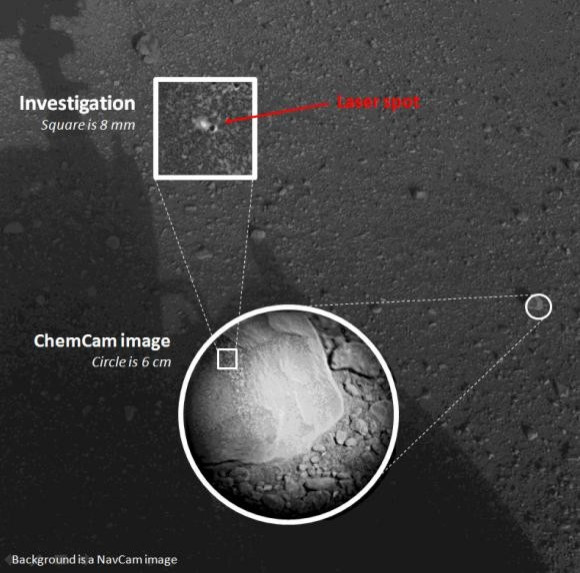Mars Rover Curiosity Blasts Martian Rock With Laser For Science [VIDEO Of Landing]

The Mars rover Curiosity scored another first this weekend, as it tested out its high-powered laser and zapped a rock to analyze its chemical makeup.
The laser, a part of Curiosity's Chemistry and Camera instrument ChemCam, zapped the small rock -- which NASA named "Coronation" -- with 30 high-powered pulses over 10 seconds. According to NASA, "each pulse delivers more than a million watts of power for about five one-billionths of a second."
When Curiosity hit the rock with its laser, atoms in Coronation were transformed into plasma, allowing the rover's ChemCam to use a spectrometer to determine the chemical makeup of the rock.
The rock Coronation was essentially target practice for Curiosity, but NASA scientists are still excited about the data the rock will provide about Mars.
"We got a great spectrum of Coronation -- lots of signal," said ChemCam Principal Investigator Roger Wiens of Los Alamos National Laboratory in New Mexico. "Our team is both thrilled and working hard, looking at the results. After eight years building the instrument, it's payoff time!"
Now that NASA has confirmed that ts laser and ChemCam are operating properly, Mars rover Curiosity will perform a few more tests near its Gale Crater landing site before making its way to its primary target, Mount Sharp.
In a move that separates the Curiosity mission from many of NASA's other projects, several Twitter accounts were set up to promote the landing. Curiosity has its own account as @MarsCuriosity, and tweeted updates about the laser, using the hashtag #pewpew, which was trending for a time on Sunday.
"Yes, I've got a laser beam attached to my head. I'm not ill tempered; I zapped a rock for science. #MSL #PewPew," the rover tweeted.
For a bonus peek at Curiosity's Mars mission, check out the first high-resolution video of the rover's landing, assembled from photos taken during the landing stage.
© Copyright IBTimes 2024. All rights reserved.






















